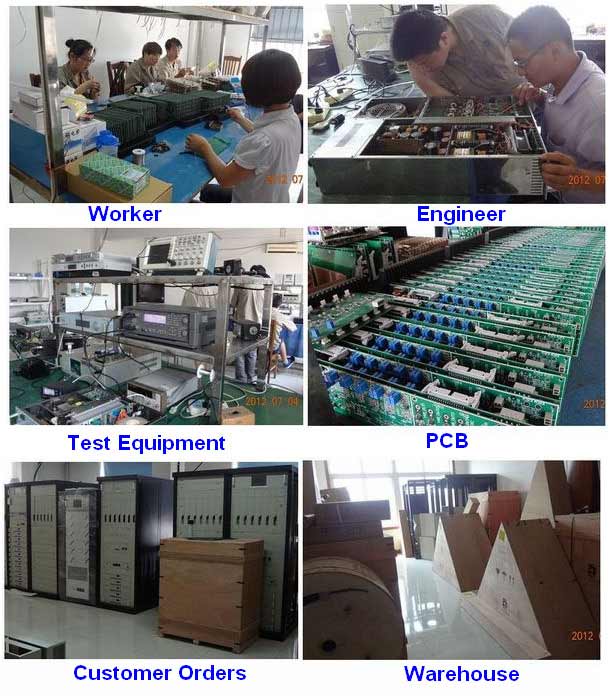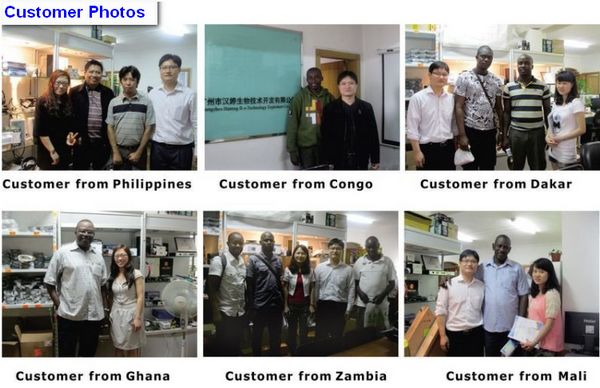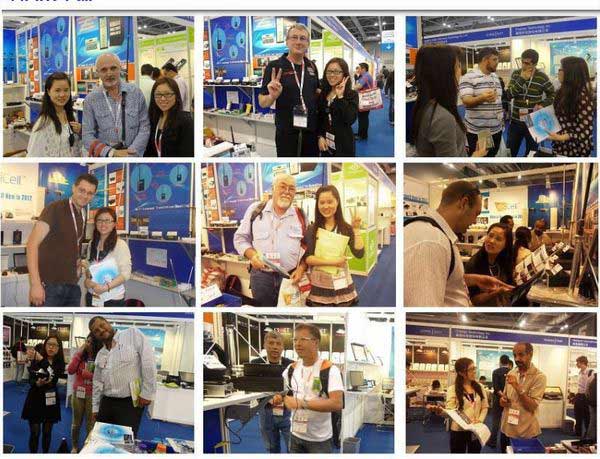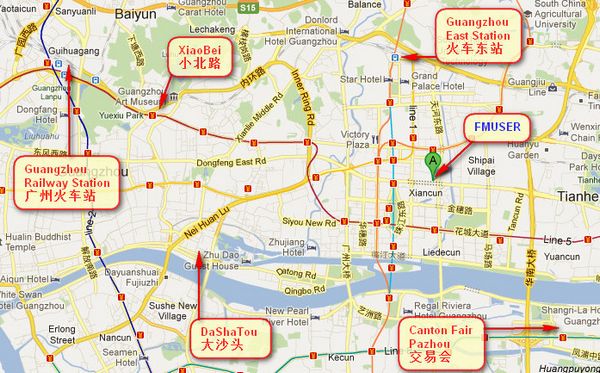1 Introduction
As a new high-bandwidth, high-quality Internet multimedia service, IPTV places higher requirements on the IP metropolitan area network of telecom operators. Compared with the traditional unicast technology, the multicast technology has the advantage that the network bandwidth does not increase linearly with the number of users on the basis of equivalent transmission efficiency, and can effectively save the load of the video server and the bearer network. Therefore, for telecom operators to deploy and implement IPTV services efficiently and economically, it is recommended to use end-to-end multicast push, and the configuration of the IP multicast network is the key.
At present, the IP metropolitan area network of telecom operators is mainly composed of metropolitan area backbone network and broadband access network, and IPTV service data is pushed to the user end through metropolitan area backbone network and broadband access network in turn. The metro backbone network is mainly composed of network layer (layer 3) devices, which can enable multicast routing protocols such as PIM-SM to access multicast sources (ie, IPTV head-end devices) for routing and forwarding multicast packets. The broadband access network is mainly composed of data link layer (layer 2) equipment, and technologies such as IGMP Proxy or IGMP Snooping can be used for Layer 2 multicast forwarding to access IPTV terminal equipment (ie, IPTV set-top boxes). Figure 1 is a schematic diagram of an IPTV end-to-end multicast push model.
pIYBAGBkThGAZmOzAAMHVeXKfuE734.png
Figure 1 IPTV end-to-end multicast push network model
This article describes the key configuration technologies of the IPTV end-to-end multicast push network from two different network levels: the metro backbone network and the broadband access network.
2. Key multicast configuration technology for metro backbone network
2.1 Multicast routing technology
The main difference between a multicast message and a unicast message is the identification of the message destination address. The destination address of the multicast message is the multicast group address (class D IP address starting with "1110"), and the unicast message is based on the destination host IP. The address is used as the destination address. Since there is no one-to-one correspondence between the multicast group address and the destination host, the multicast router can only use the uniqueness of the source address of the message to make routing decisions. In other words, the multicast router sends the message in the direction away from the multicast source based on the source address of the message instead of the destination address. This technology is called reverse path forwarding (RPF for short).
To avoid problems such as routing loops, RPF stipulates that multicast packets must reach the router from the designated upstream neighboring node, and multicast packets forwarded by other neighboring nodes are discarded. When there is a problem with multicast routing, multicast packets may not be able to reach through other paths like unicast packets, IPTV live broadcast signals will be interrupted in the backbone network, and unicast applications such as web browsing and mail sending and receiving are normal obstacles. At this time, along the multicast distribution path, check the RPF routing table of the multicast router and its upstream neighboring nodes.
2.2 Multicast routing switching technology
The multicast distribution tree in the PIM-SM protocol can be divided into two categories: source tree and shared tree. The source tree uses the multicast source as the root of the tree, also known as the shortest path tree, which can minimize the end-to-end multicast delay, but the router must store a large amount of routing information, which consumes a lot of system resources; the shared tree uses RP (PIM-SM) An important router in the protocol, used for routing and converging between multicast sources and multicast routers) As the common root node of all multicast distribution trees, multicast source traffic must first reach the RP before being delivered, and the multicast path is usually not optimal , It will introduce additional network delay, but the routing information that the router needs to retain can be very small.
The PIM-SM protocol makes full use of the advantages of the two multicast distribution trees. In the initial stage of multicast, the multicast router cannot use the source tree because it cannot know the location of the multicast source, but it can obtain the first few multicast packets sent by the multicast source through the known RP node and its shared tree. Know the location of the multicast source and switch from the shared tree to the source tree to reduce network delay and avoid network bottlenecks that may be caused by RP nodes.
The metro backbone network is generally mainly composed of Cisco routers. Routers such as Cisco implement the switching of the multicast distribution tree through the preset threshold SPT-Threshold of the flow rate. When it is detected that the multicast flow rate of a multicast source exceeds SPT-Threshold, its multicast routing will switch from the shared tree to the source tree; similarly, if the multicast flow rate is lower than SPT-Threshold, its multicast routing You can also switch back from the source tree to the shared tree. SPT-Threshold is generally configured as 0, so that the router will switch from the shared tree to the source after receiving the first multicast packet.
2.3RP configuration technology
As the root node of the shared tree, RP plays a role of linking up and down in the multicast process. Considering that the PIM-SM protocol has the characteristics of multicast distribution tree switching, RP is generally used to establish the initial connection between the multicast source and the multicast router. Once the multicast routing of the router is switched from the shared tree to the source tree, it will not RP and its shared tree are needed again. Therefore, the location of the RP in the multicast network is not very important. The key is its reliability and stability.
In order to improve the reliability and stability of RP, multiple multicast routers can be selected to share the function of RP (that is, Anycast RP technology), and the loopback interface of each RP node is assigned the same IP address, thereby forming the load sharing and Fault protection.
The RP configuration problem in the multicast network is not only related to the configuration and deployment of the RP node itself, but also involves the problem of how other multicast routers learn about the RP node. In the initial stage of multicast, the multicast router may not know the location of the multicast source, but the RP address must be known. There are two main ways for a multicast router to obtain an RP address, that is, the static configuration RP method and the automatic discovery RP method. The static configuration of RP is more secure and can effectively prevent fraudulent activities such as forging RP, but the workload of network configuration is heavy and it is not conducive to the dynamic adjustment of RP and other nodes; the automatic discovery of RP can reduce the workload of configuration and facilitate network changes and control strategies. Adjustment, but there are certain security risks. For a small-scale metropolitan area backbone network, you can use the method of statically configuring RP on each multicast router; for a large-scale metropolitan area backbone network with strict security defense policies, it is recommended to use the method of automatically discovering RP.
2.4 IPTV head-end multicast join technology
In the initial stage of multicast, multicast routers generally obtain IPTV headend (ie, multicast source) traffic and location information through known RP nodes and their shared trees. In order for the RP to learn about the multicast source, the multicast router directly connected to the multicast source is responsible for encapsulating the first few multicast packets sent by the multicast source in a separate PIM Register message, and initiates multicast to the RP in unicast mode. Source registration process. Through this message, the RP can obtain not only the packets of the multicast group of interest, but also the IP address of the multicast source. After that, the RP forwards the multicast source information to other multicast routers, and ends the multicast source registration process with a PIM Registe-Stop message.
3. Multicast key configuration technology of broadband access network
3.1 IPTV user end multicast join technology
The IPTV client (set-top box) communicates with the multicast router (usually undertaken by the service router or broadband access server) of the metro backbone network service access control layer through the IGMP protocol via the broadband access network to join or exit a specific Multicast group (ie IPTV live channel).
When a set-top box sends a multicast group join request message to a multicast router, the destination MAC address of the message is the MAC address of the multicast group instead of the multicast router, which is different from the unicast method. It should be noted that a multicast group MAC address actually corresponds to 32 different multicast group IP addresses. This is because the MAC address of the multicast group is 01:00:5E:00:00:00~01:00:5E:7F:FF:FF, that is, the effective address space is only 23 bits, and the effective address of the multicast group IP There are 28 spaces.
The mapping relationship between the two is to equate the lower 23 bits of the MACC address with the lower 23 bits of the IP address, which results in the loss of the upper 5 bits of the multicast group IP address. For example, if three different IPTV live channels use 224.0.0.1, 224.128.0.1, and 239.128.0.1 as the multicast group IP addresses, their corresponding multicast group MAC addresses are all 01:00:5E:00: 00:01, which will cause the set-top box and the second-tier equipment of the broadband access network to be unable to distinguish the three signals. Therefore, pay attention to such issues when planning multicast IP addresses.
3.2 Layer 2 multicast forwarding technology
The broadband access network is composed of a large number of network element devices such as Layer 2 switches and DSLAMs running at the data link layer. The feature of Layer 2 equipment is that it exchanges/forwards data frames based on MAC addresses between device ports, and has poor parsing and routing functions for the third layer (network layer) of IP packets, so it cannot directly support IGMP working on the third layer. And other multicast protocols. When a typical Layer 2 device such as a switch processes IPTV multicast traffic, it broadcasts multicast data frames to all its ports according to unknown destination addresses or broadcast methods, which is likely to cause problems such as broadcast storms.
To solve the problem of multicast packet flooding, Layer 2 multicast forwarding technologies, such as IGMP Snooping and IGMP Proxy technologies, need to be adopted. The IGMP Snooping technology monitors the IGMP message between the set-top box and the multicast router to grasp the forwarding relationship of the device port to the multicast data frame; while the IGMP Proxy technology intercepts the IGMP message between the set-top box and the multicast router Filtering and proxy forwarding can save multicast traffic between the multicast router and the Layer 2 device, but it requires high performance indicators such as the processing capacity and memory of the network element device. When configuring Layer 2 devices, you can choose according to the actual performance of the network element device and the degree of support for IGMP Snooping/Proxy technology.
Take an IPTV live channel with a bandwidth of 2 Mbit/s as an example. If the Layer 2 device does not use Layer 2 multicast forwarding technology, the multicast packets sent to all IPTV users will be forwarded to all ports, even if the user port has 10 Mbit/s. s Access bandwidth, the multicast packets of 5 IPTV live channels can be blocked; after adopting the Layer 2 multicast forwarding technology, the multicast packets are only forwarded to the ports with the use request, and if each port is at most only connected For an IPTV set-top box, at most only one multicast packet (that is, 2 Mbit/s traffic) of a live channel is forwarded to the corresponding port.
3.3 VLAN configuration technology
The traffic forwarded by Layer 2 multicast only involves IPTV multicast services and does not involve other broadband services. Therefore, in the broadband access network, technologies such as VLANs are generally used to isolate IPTV multicast traffic from other services and user traffic. Commonly used VLAN technologies include cross-VLAN multicast replication technology from multicast VLAN to each user VLAN, and QinQ, which solves insufficient number of VLAN IDs
3.4 Static multicast and dynamic multicast technology
The IPTV live program is delivered to the user terminal via the IP bearer network, and there are mainly two multicast modes, namely dynamic multicast mode and static multicast mode. In dynamic multicast mode, switches, DSLAMs and other devices will receive and deliver the channel program only after receiving the first user request to join a channel (multicast group); and when the channel (multicast group) lasts When a user logs out, the network element device will stop receiving the multicast stream. The static multicast mode is to statically configure the MAC multicast forwarding entries of each IPTV channel (multicast group) on the switching equipment, regardless of whether the downstream users watch it or not, the multicast stream has been delivered to the network element equipment.
Static multicast traffic has nothing to do with the number of IPTV users, only the number of channels and bandwidth per channel. When the number of users is less than the number of channels, the traffic will be greater than the unicast traffic; the maximum traffic of dynamic multicast is when the number of concurrent IPTV users is less than the number of channels When the number of IPTV concurrent users is greater than the number of channels, it is equivalent to static multicast traffic. In the static multicast mode, the user's channel switching speed is fast and the service perception is good, but the network bandwidth demand is greater; dynamic multicast can minimize the network traffic under any circumstances, but when the user receives a new channel (Multicast group), there may be a certain network delay.
When the number of IPTV users connected to the network equipment is very small, the advantages of multicast are not obvious. Therefore, in the initial stage of the development of IPTV services, there are not many IPTV users or the broadband access network has not been reconstructed in place. You can use dynamic multicast or even unicast to transmit IPTV live signals. When the number of users connected to a network device far exceeds the number of IPTV channels, the characteristics of multicasting to save network traffic bandwidth become more and more significant. At this time, that is, when the IPTV service has been developed to a mature stage and the broadband access network transformation has been in place, the static multicast mode can be used to transmit the IPTV live signal to further improve the IPTV service quality. Therefore, operators can decide whether to configure the access network equipment in a dynamic or static multicast mode according to actual conditions such as network quality and IPTV service penetration.
4 Conclusion
Combining the existing IP metropolitan area network of telecom operators, this paper systematically expounds the key technologies of IPTV end-to-end multicast push network configuration, which has a good reference significance for telecom operators to deploy and implement IPTV services efficiently and economically.



|
|
|
|
How far(long) the transmitter cover?
The transmission range depends on many factors. The true distance is based on the antenna installing height , antenna gain, using environment like building and other obstructions , sensitivity of the receiver, antenna of the receiver . Installing antenna more high and using in the countryside , the distance will much more far.
EXAMPLE 5W FM Transmitter use in the city and hometown:
I have a USA customer use 5W fm transmitter with GP antenna in his hometown ,and he test it with a car, it cover 10km(6.21mile).
I test the 5W fm transmitter with GP antenna in my hometown ,it cover about 2km(1.24mile).
I test the 5W fm transmitter with GP antenna in Guangzhou city ,it cover about only 300meter(984ft).
Below are the approximate range of different power FM Transmitters. ( The range is diameter )
0.1W ~ 5W FM Transmitter :100M ~1KM
5W ~15W FM Ttransmitter : 1KM ~ 3KM
15W ~ 80W FM Transmitter : 3KM ~10KM
80W ~500W FM Transmitter : 10KM ~30KM
500W ~1000W FM Transmitter : 30KM ~ 50KM
1KW ~ 2KW FM Transmitter : 50KM ~100KM
2KW ~5KW FM Transmitter : 100KM ~150KM
5KW ~10KW FM Transmitter : 150KM ~200KM
How to contact us for the transmitter?
Call me +8618078869184 OR
Email me [email protected]
1.How far you want to cover in diameter ?
2.How tall of you tower ?
3.Where are you from ?
And we will give you more professional advice.
About Us
FMUSER.ORG is a system integration company focusing on RF wireless transmission / studio video audio equipment / streaming and data processing .We are providing everything from advice and consultancy through rack integration to installation, commissioning and training.
We offer FM Transmitter, Analog TV Transmitter, Digital TV transmitter, VHF UHF Transmitter, Antennas, Coaxial Cable Connectors, STL, On Air Processing, Broadcast Products for the Studio, RF Signal Monitoring, RDS Encoders, Audio Processors and Remote Site Control Units, IPTV Products, Video / Audio Encoder / Decoder, designed to meet the needs of both large international broadcast networks and small private stations alike.
Our solution has FM Radio Station / Analog TV Station / Digital TV Station / Audio Video Studio Equipment / Studio Transmitter Link / Transmitter Telemetry System / Hotel TV System / IPTV Live Broadcasting / Streaming Live Broadcast / Video Conference / CATV Broadcasting system.
We are using advanced technology products for all the systems, because we know the high reliability and high performance are so important for the system and solution . At the same time we also have to make sure our products system with a very reasonable price.
We have customers of public and commercial broadcasters, telecom operators and regulation authorities , and we also offer solution and products to many hundreds of smaller, local and community broadcasters .
FMUSER.ORG has been exporting more than 15 years and have clients all over the world. With 13 years experience in this field ,we have a professional team to solve customer's all kinds of problems. We dedicated in supplying the extremely reasonable pricing of professional products & services. Contact email : [email protected]
Our Factory

We have modernization of the factory . You are welcome to visit our factory when you come to China.

At present , there are already 1095 customers around the world visited our Guangzhou Tianhe office . If you come to China , you are welcome to visit us .
At Fair

This is our participation in 2012 Global Sources Hong Kong Electronics Fair . Customers from all over the world finally have a chance to get together.
Where is Fmuser ?

You can search this numbers " 23.127460034623816,113.33224654197693 " in google map , then you can find our fmuser office .
FMUSER Guangzhou office is in Tianhe District which is the center of the Canton . Very near to the Canton Fair , guangzhou railway station, xiaobei road and dashatou , only need 10 minutes if take TAXI . Welcome friends around the world to visit and negotiate .
Contact: Sky Blue
Cellphone: +8618078869184
WhatsApp: +8618078869184
Wechat: +8618078869184
E-mail: [email protected]
QQ: 727926717
Skype: sky198710021
Address: No.305 Room HuiLan Building No.273 Huanpu Road Guangzhou China Zip:510620
|
|
|
|
English: We accept all payments , such as PayPal, Credit Card, Western Union, Alipay, Money Bookers, T/T, LC, DP, DA, OA, Payoneer, If you have any question , please contact me [email protected] or WhatsApp +8618078869184
-
PayPal.  www.paypal.com www.paypal.com
We recommend you use Paypal to buy our items ,The Paypal is a secure way to buy on internet .
Every of our item list page bottom on top have a paypal logo to pay.
Credit Card.If you do not have paypal,but you have credit card,you also can click the Yellow PayPal button to pay with your credit card.
---------------------------------------------------------------------
But if you have not a credit card and not have a paypal account or difficult to got a paypal accout ,You can use the following:
Western Union.  www.westernunion.com www.westernunion.com
Pay by Western Union to me :
First name/Given name: Yingfeng
Last name/Surname/ Family name: Zhang
Full name: Yingfeng Zhang
Country: China
City: Guangzhou
|
---------------------------------------------------------------------
T/T . Pay by T/T (wire transfer/ Telegraphic Transfer/ Bank Transfer)
First BANK INFORMATION (COMPANY ACCOUNT):
SWIFT BIC: BKCHHKHHXXX
Bank name: BANK OF CHINA (HONG KONG) LIMITED, HONG KONG
Bank Address: BANK OF CHINA TOWER, 1 GARDEN ROAD, CENTRAL, HONG KONG
BANK CODE: 012
Account Name : FMUSER INTERNATIONAL GROUP LIMITED
Account NO. : 012-676-2-007855-0
---------------------------------------------------------------------
Second BANK INFORMATION (COMPANY ACCOUNT):
Beneficiary: Fmuser International Group Inc
Account Number: 44050158090900000337
Beneficiary's Bank: China Construction Bank Guangdong Branch
SWIFT Code: PCBCCNBJGDX
Address: NO.553 Tianhe Road, Guangzhou, Guangdong,Tianhe District, China
**Note: When you transfer money to our bank account, please DO NOT write anything in the remark area, otherwise we won't be able to receive the payment due to government policy on international trade business.
|
|
|
|
* It will be sent in 1-2 working days when payment clear.
* We will send it to your paypal address. If you want to change address, please send your correct address and phone number to my email [email protected]
* If the packages is below 2kg,we will be shipped via post airmail, it will take about 15-25days to your hand.
If the package is more than 2kg,we will ship via EMS , DHL , UPS, Fedex fast express delivery,it will take about 7~15days to your hand.
If the package more than 100kg , we will send via DHL or air freight. It will take about 3~7days to your hand.
All the packages are form China guangzhou.
* Package will be sent as a "gift" and declear as less as possible,buyer don't need to pay for "TAX".
* After ship, we will send you an E-mail and give you the tracking number.
|
|
|
For Warranty .
Contact US--->>Return the item to us--->>Receive and send another replace .
Name: Liu xiaoxia
Address: 305Fang HuiLanGe HuangPuDaDaoXi 273Hao TianHeQu Guangzhou China.
ZIP:510620
Phone: +8618078869184
Please return to this address and write your paypal address,name,problem on note: |
|

























